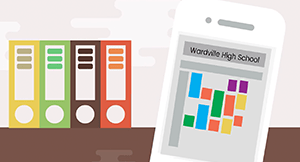
Under normal circumstances school business officers work a little bit of magic to stretch a dollar.
Now add in a pandemic and massive uncertainty over returning to face-to-face education, which requires increased resources to comply with CDC requirements. Would alchemy be enough?
Here are the top 5 new budget conundrums for school business officers.
Staff
The top spot remains reliable with staffing needs presenting the most challenges to schools and districts. Schools struggled to fill positions before, and the pandemic will only continue to inflame the situation.Emerging challenges include the need to rapidly expand transportation for students. Social distancing cuts bus access dramatically, requiring more drivers. Bus drivers are often retirees working part time, which means districts anticipate many of their drivers will opt out during the pandemic. Substitute bus drivers will be added to the usual push for substitute teachers. And, because we live in completely uncertain times, bus drivers may also find themselves adjusting to a whole new set of responsibilities if districts return to virtual-only learning.
Schools are considering several strategies to attract and retain staff even with these odds stacked against them. Now is the time to be up-front about the ups and downs new hires may encounter, and to emphasize the flexibility your district will require. Onboarding, training, and communication must expand for new staff to meet ever-changing expectations.
Protecting people
Whether or not students and staff will wear masks depends on many factors, including local mandates. Masks aside, personal protective equipment (PPE) will eat up a big, and likely new, chunk of school budgets this year. Hand sanitizer, extra cleaning equipment and staff, and other consumable components of keeping school buildings clean and safe will add up quickly. Districts are also pricing thermometers and other medical equipment to support student health.Double check with vendors to see what is in store for health and safety this fall. Even if it's a branch out from the norm, vendors have been pivoting during the pandemic to provide useful tools. Health screening surveys, temperature reporting systems, and other software enhancements may be just around the corner, saving the funds needed to implement something new.
The truth is our schools were not designed to accommodate social distancing. District leaders must react accordingly to strategize how virtual learning can free up space for students who require in-person learning, including K–3 students, special education students, and students who do not have access to virtual learning at home. In some cases, this calls for retrofitting schools with new HVAC systems in all or part of school buildings.
Through it all, remember: equity doesn’t mean every student gets the same thing, but rather, the resources they need to thrive. Budgets don’t love this approach, unfortunately. It’s easier to budget when things are relatively uniform and bulk.
Virtual access
Of the many challenges unearthed this spring, internet access ranked among the highest. Many students, particularly students of color, needed to leave their homes to seek out a quality internet connection to participate in virtual education. If the implication of students struggling wasn’t horrifying enough, then consider this patchy solution from a network security standpoint. The more students connecting with poorly secured, free public WIFI, the more opportunities for hackers to join right along with them.Increasing virtual access is expensive and complicated. In some areas, it’s also functionally impossible. Rural students (and teachers, for that matter) may live in areas that high speed internet providers cannot reach. IT teams who are empowered by superintendents and leadership teams have come up with creative solutions.
Mobile hotspots which connect to cell phone towers can help with this conundrum but may need to be used sparingly. Remember the bus drivers who had to pivot away from transporting kids? They can be called into duty to provide mobile hotspots via bus to neighborhoods without reliable connections. This spring, districts chose to place buses strategically to add WIFI to areas which lacked connectivity.
Detailed, honest communication with families about their digital needs is crucial to inform purchasing for virtual learning. Not every family will need support, so providing WIFI requires a detailed survey of needs and conversations about equity and crisis response.
Some districts partnered with internet service providers to provide free or low-cost WIFI to students. These solutions vary from district to district and are largely dependent on local decisions—which can be comforting or tricky, depending on each district's community support.
Surprises
What will these be? Well, we’re not sure yet, but it looks like probably more of the same: protecting students, connecting students, and hiring staff to support teaching and learning.As we learn more about the novel virus, districts will, as always, be expected to pivot to meet the needs of the community. Districts may get word mid-year that HVAC systems must be upgraded to fight virus spread indoors. They may open and close school buildings multiple times, moving to virtual or blended learning each time. Training and professional development will look different. Conferences and travel may not happen, freeing up funds which could be invested elsewhere.
Relief
The Coronavirus Aid, Relief and Economic Security (CARES) Act provides billions of dollars in relief to school districts nationwide. This aid can be used for public health, preparing buildings, sanitation efforts, and much more. The uses are deliberately quite broad since it’s clear schools have a wide variety of needs to fill. Each district is making their own calls regarding return to school, and each will have vastly different uses for CARES Act funding.Still, it’s not meant to be a long-term aid package: it’s a short-term relief for schools. Concentrate on immediate needs to solve current problems for students and families.
Forecasting school budgets has never been an easy job, and this year ratchets up the stakes and the difficulty. But as always, school business officers are poised to deliver. From districts providing job placement assistance to parents to the guaranteed delivery of a meal, school officials are working tirelessly to help make ends meet in the face of national crises.
Thank you.
Follow-up resource: 5 ways to protect your data
During remote work, your data is at risk. Learn how to protect yourself.WHAT'S NEXT FOR YOUR EDTECH? The right combo of tools & support retains staff and serves students better. We'd love to help. Visit skyward.com/get-started to learn more.

|
Casey Thompson Web & Digital Media Manager |




